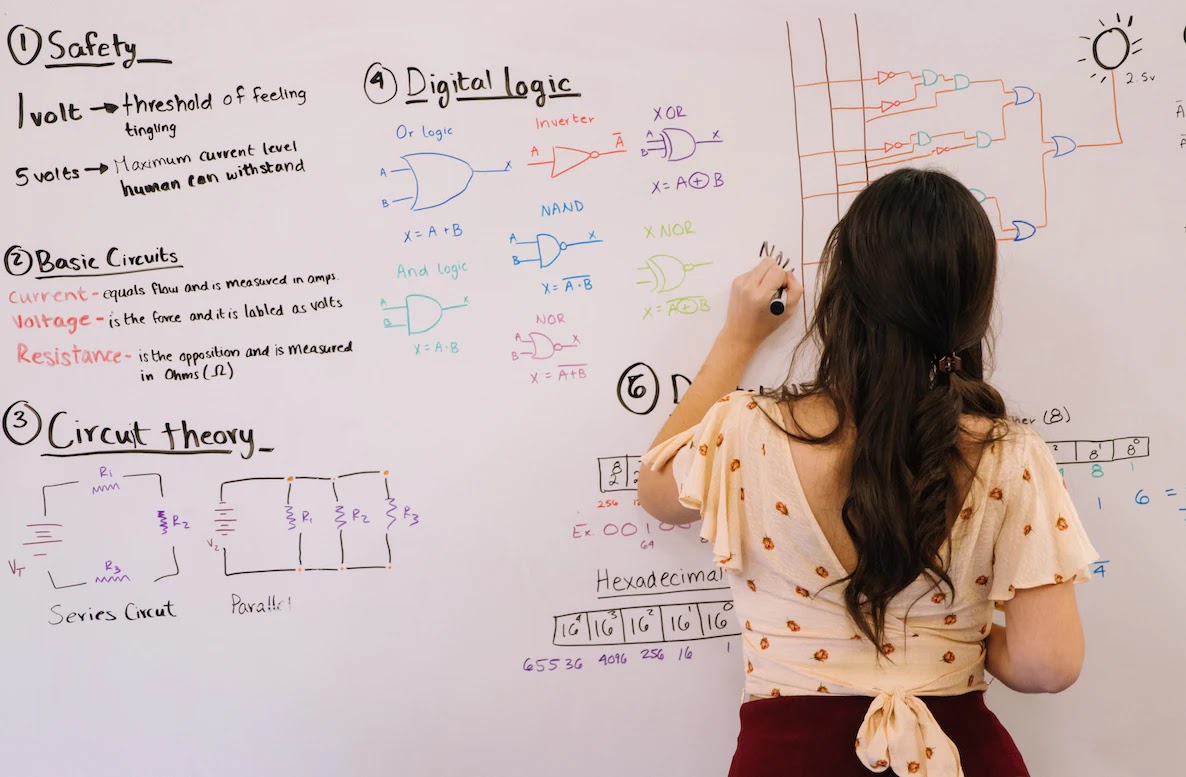L.O Answers/Solutions
Writer: Lungelo Malomane
Activity 1
1.1 Define Conflict - Conflict is serious disagreement and argument. If two people or groups are in conflict, they have had a serious disagreement and have not yet reached agreement.
state FOUR reasons why the inability to communicate effectively may cause conflict between you and your friends.
- It can lead to misunderstanding
- Poor communication can also lead to a lack of trust and connection between friends. Without proper communication
- Without proper communication, it’s difficult to properly express what you think and feel
- it can lead to frequent arguments
1.2 Mention THREE benefits of being able to effectively communicate with your teachers.
-It makes learning easier
- it improves the students self expression
- it boost mental health
1.3 Discuss how appropriate expression of views or feelings may enhance effective communication between you and your parents
- It’s important to communicate your thoughts and feelings in a way that focuses on the issue and not on criticizing or attacking your parents.
- Consider their point of view, think critically about what you want to say and choose words that express your feelings and opinion without being too aggressive or reactive
- Respectful communication can help to create a safe environment for your parents to understand and analyze your thoughts and feelings.
- This can help foster a more open and honest relationship between you and your parents, and ultimately lead to better communication and understanding.
1.4 Explain how making early arrangements for higher education could minimise the stress of having to rush after receipt of results.
- Making early arrangements for higher education can minimise stress by allowing students to plan ahead and prepare for their future.
- Students can also use this time to begin gathering required documents, such as transcripts, test scores, transcripts, and references.
- Doing so ahead of time can make the process of applying to universities significantly easier
- it allows students to make sure they have everything they need before results are even released.
- can help to reduce stress by allowing students to make informed decisions about what program or university to apply to
1.5 THREE practical ways in which you, as a school going youth, could establish good communication with teachers. In each answer, also indicate how that could help you tackle the most difficult aspects of your subjects.
* Create a safe environment
- Create a safe and supportive environment where students feel comfortable to open up and express their thoughts and ideas.
* Encourage teamwork
- Doing more team activities, and group work is a great way to take the focus off competing with one another and concentrate more on working together to get the best results.
* Be sure to give positive feedback
- Often teachers forget to mention when a student has performed well and instead focus on the negative aspects such as bad behavior.
We're now going to Activity 2 (start each Activity on a New Page)
ACTIVITY 2
2.1 Define Study Plan - A study plan is a chart or schedule that allows you to block out time needed each day for well-defined learning activities, goals, and routine daily tasks.
state FOUR ways in which stress may negatively affect your ability to answer questions in an examination session.
- Reduced ability to concentrate: When you are stressed, your mind can become scattered and unfocused, making it difficult to concentrate on the questions in front of you.
- Memory impairment: Stress can interfere with your memory and make it harder to recall information that you have studied.
- Physical symptoms: Stress can cause physical symptoms like headaches, stomach upset, and muscle tension that can distract you and negatively impact your ability to focus on the exam.
- Poor decision-making: High levels of stress can lead to poor decision-making, causing you to make mistakes in answering questions that you would not normally make.
2.2 Mention THREE benefits of properly planning your responses when answering examination questions.
- Increased efficiency: Planning your responses in advance helps you to organize your thoughts and ideas, which can lead to more efficient use of your time during the examination.
- Improved quality of answers: Planning your responses gives you the opportunity to think about the best way to present your answers, which can result in more clear and well-structured responses that effectively demonstrate your understanding of the material.
- Reduced stress: By planning your responses in advance, you can reduce stress and anxiety during the examination by having a clear idea of what you want to say and how you want to present your answers. This can help you to remain calm and focused during the examination and improve your performance.
2.3 Discuss the importance of understanding the marks allocated to examination questions.
- Time management: Knowing the marks allocated to each question can help students to manage their time more effectively during an exam.
- Prioritization: Understanding the marks allocated to each question can also help students to prioritize their efforts during an exam.
- Preparation: Knowing the marks allocated to each question can also help students to prepare for exams more effectively.
- Accuracy: Understanding the marks allocated to each question can also help students to ensure that they answer the question accurately and fully.
2.4 Explain TWO ways in which you may effectively use the allocated time to satisfactorily answer examination questions.
- Prioritization: First, prioritize the questions based on their weightage or difficulty level and allocate more time to the important ones. This way, you can ensure that you have enough time to answer the more challenging questions.
- Pacing: Secondly, pace yourself throughout the exam by regularly monitoring the time you have left and adjusting your speed accordingly.
2.5 Recommend what grade 12s could do to minimise the impact of the anxiety they may feel on the day of the examination. In your answers, also indicate how that could enhance their performance in the examination.
* Work smarter
- Studying for matric exams can be daunting if you haven’t adequately studied for your exams. Create a study plan that works for you and is simple.
* Manage expectations
- Be realistic about what you can do and what you aren’t able to do.
* Have a support structure
- Having people you can rely on during your matric exams is critical to ensure that you stay on track.
We're now going to Activity 3 (Start each Activity on a new Page)
Activity 3
3.1 Define Unemployment - a situation where a person actively searches for employment but is unable to find work.
state FOUR reasons for unemployment amongst the South African youth.
- Lack of qualifications. Young people without any skills are much more likely to be unemployed (structural unemployment) A report by Centre for Cities suggest there is a correlation between youth unemployment and poor GCSE results in Maths and English.
- Geographical Unemployment. Youth unemployment is often focused in certain areas – often inner cities where there is a cycle of low achievement and low expectations.
- Real Wage Unemployment. You could argue unemployment is caused by labour market rigidities and wages being above the equilibrium rate.
- Lack of graduate jobs. Many young people leave college with a degree but then find graduate jobs are in short supply.
- Frictional unemployment. School leavers may just take time to find the right work.
- Cultural/social factors. Youth unemployment is often highest amongst deprived areas where there is pessimism over job prospects.
(Choose any Four)
3.2 Mention FOUR negative impacts of unemployment to the quality of life of an individual.
* Reduced income
- Unemployed individuals experience reduced income as a direct result of not having a job.
* Health problems
- Unemployment can also have a significant impact on a person's physical health.
* Negative familial effects
- Family members of an unemployed person are also at risk of the negative impact of unemployment.
* Mental health challenges
- Studies have shown that unemployment increases a person's risk for depressive symptoms.
3.3 Discuss FOUR reasons why not following changes in the job market may result in unemployment.
- Lack of skills: The job market is constantly evolving and new skills are in high demand. If you are not keeping up with the changes and updating your skills, you may find that your current skills are no longer relevant, making you less competitive in the job market.
- Inflexibility: Employers are looking for employees who are flexible and adaptable to change. If you are not willing to adapt to changes in the job market, you may miss out on job opportunities and eventually face unemployment.
3.4 Explain why entrepreneurship may be a solution to the high levels of unemployment in South Africa.
- Job creation: Entrepreneurs create jobs by starting and growing their own businesses. As they expand, they need to hire staff to help them run their operations. This results in the creation of new jobs, which can help to reduce unemployment levels.
- Economic growth: Entrepreneurship can stimulate economic growth by creating new products and services, and by improving existing ones. This can lead to increased consumer spending, which in turn creates more demand for goods and services. As the economy grows, more job opportunities can become available, which can reduce unemployment.
- Self-employment: Entrepreneurship provides an alternative to traditional employment. It offers individuals the opportunity to create their own jobs and become self-employed. This can be an attractive option for people who struggle to find employment in the traditional job market.
- Innovation: Entrepreneurs are often innovators who identify new opportunities and ways of doing things. They can introduce new products and services, or improve existing ones, which can create new markets and demand. This can lead to the creation of new jobs and the growth of existing businesses.
- Diversification: Entrepreneurship can help to diversify the economy by creating new industries and businesses. This can reduce the country’s reliance on a few key sectors or industries, which can make the economy more resilient to economic shocks.
3.5 Recommend THREE ways in which the youth could use entrepreneurship to benefit their community. In your answer, also indicate how that could bring about positive change in the life of the community.
* Entrepreneurship is more than just starting up a new business.
- Even without a formal business structure there are so many benefits of entrepreneurship for the individual, like critical thinking, creativity, decision-making, and leadership.
* Entrepreneurship requires a new level of thinking.
-If the entrepreneur’s only experience is coming from a trade, for example, then they may be starting with a limited understanding of business management and finance and have to gain higher knowledge and education in those areas.
* Increasing entrepreneurial activities supports job creation.
- Entrepreneurship delivers empowerment. Real change comes from empowerment, increases in dignity, and marketplace growth. Recognizing need and seizing opportunity.
* Entrepreneurship creates new sources of wealth
- Creating and growing a business turns resources into value by sharing time, talents and treasures with others.
* Entrepreneurship works best in community.
- Entrepreneurs can increase the odds of success by working with others. No one can do business alone.
* Entrepreneurship done intentionally creates more than income.
- Raising income and upleveling skills of staff takes dedication and intention for betterment in order to create exponential benefits of a highly productive and profitable medium-sized business.
* Entrepreneurship delivers the hope of seeing opportunity
- As a business grows, the owners, staff, vendors, and customers create their own value, point the direction, and are guided by the organization’s goals and visions.
You might also like:
References and Sources or Research ( websites and Screenshots )




































